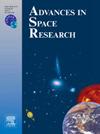综合 AHP 和双变量分析,对上维拉尔盆地进行未来洪水风险评估
IF 2.8
3区 地球科学
Q2 ASTRONOMY & ASTROPHYSICS
引用次数: 0
摘要
洪水易发区地图为评估和管理洪水易发区提供了宝贵的信息,有助于制定积极的规划、降低风险战略和保护脆弱社区。当前的研究集中于通过对上韦拉尔流域洪水易发性的全面评估,以及对 2050 年的预测,推进可持续发展实践。本研究采用综合方法,使用了层次分析法(AHP)和双变量分析法。使用了九个关键参数:海拔、与河流的距离、与道路的距离、排水密度、预测的土地利用、土地利用变化、预测的降水量、坡度、土壤类型和地形湿润指数(TWI)。土地利用变化评估模块(MOLUSE)插件采用了细胞自动机-人工神经网络(CA-ANN),用于预测 2050 年的土地利用、土地利用变化(LULC)地图。此外,还采用了经过偏差校正的耦合模式相互比较项目 6(CMIP 6)EC EARTH 3 模式(GCM)RCP 4.5 和 8.5 预测降水数据。得出的洪水易发区分为三类:低、中、高,在 RCP 4.5 中分别占总面积的 32.64%、55.52% 和 11.84%,在 RCP 8.5 中分别占总面积的 34.63%、53.46% 和 11.91%。在这两种情景下,近 38% 的居住区面临高洪水风险。这项研究为政策制定者和利益相关者提供了重要见解,有助于制定可持续战略,以应对上维拉尔地区到 2050 年的土地利用、降水模式和洪水易发性的预期变化。本文章由计算机程序翻译,如有差异,请以英文原文为准。
Futuristic flood risks assessment, in the Upper Vellar Basin, integrating AHP and bivariate analysis
Flood susceptibility maps provide invaluable information for assessing and managing flood-prone areas, aiding in proactive planning, risk reduction strategies, and safeguarding vulnerable communities. The current research concentrates on advancing sustainable development practices by undertaking a comprehensive assessment of flood susceptibility in the Upper Vellar basin, with a projection for 2050. Employing an integrative methodology, this study utilizes an Analytical Hierarchy Process (AHP) and Bivariate Analysis. Nine critical parameters were used: elevation, distance from the river, distance from the road, drainage density, predicted LULC, projected precipitation, slope, soil type, and Topographic Wetness Index (TWI). The Modules of Land Use Change Evaluation (MOLUSE) plugin, which uses Cellular Automata-Artificial Neural Network (CA-ANN), was employed to predict the LULC map for the year 2050. Furthermore, bias-corrected Coupled Model Intercomparison Project 6 (CMIP 6) EC EARTH 3 Model (GCM) RCP 4.5 and 8.5 projected precipitation data were employed. The resulting flood susceptibility zones are classified into three categories: low, moderate, and high, with proportions of 32.64%, 55.52%, and 11.84% for RCP 4.5, and 34.63%, 53.46%, and 11.91% for RCP 8.5, respectively, concerning the total area. In both scenarios, nearly 38% of the settlement area is at high flood risk. This study provides essential insights for policymakers and stakeholders, facilitating the formulation of sustainable strategies to address projected changes in land use, precipitation patterns, and flood susceptibility in the Upper Vellar region up to 2050.
求助全文
通过发布文献求助,成功后即可免费获取论文全文。
去求助
来源期刊

Advances in Space Research
地学天文-地球科学综合
CiteScore
5.20
自引率
11.50%
发文量
800
审稿时长
5.8 months
期刊介绍:
The COSPAR publication Advances in Space Research (ASR) is an open journal covering all areas of space research including: space studies of the Earth''s surface, meteorology, climate, the Earth-Moon system, planets and small bodies of the solar system, upper atmospheres, ionospheres and magnetospheres of the Earth and planets including reference atmospheres, space plasmas in the solar system, astrophysics from space, materials sciences in space, fundamental physics in space, space debris, space weather, Earth observations of space phenomena, etc.
NB: Please note that manuscripts related to life sciences as related to space are no more accepted for submission to Advances in Space Research. Such manuscripts should now be submitted to the new COSPAR Journal Life Sciences in Space Research (LSSR).
All submissions are reviewed by two scientists in the field. COSPAR is an interdisciplinary scientific organization concerned with the progress of space research on an international scale. Operating under the rules of ICSU, COSPAR ignores political considerations and considers all questions solely from the scientific viewpoint.
 求助内容:
求助内容: 应助结果提醒方式:
应助结果提醒方式:


